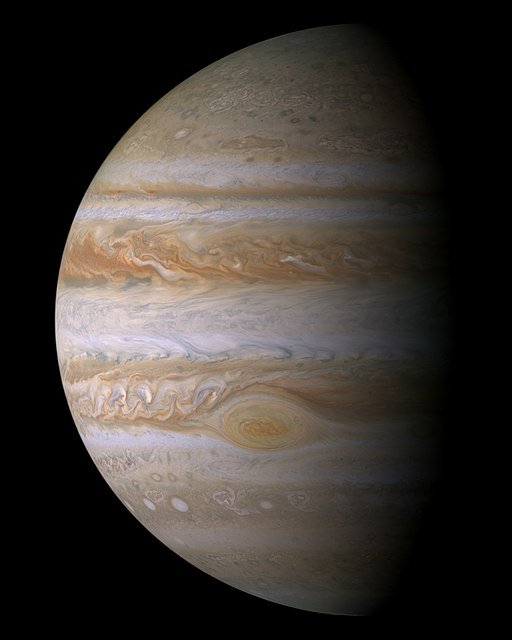Image: NASA/JPL/Space Science Institute
Planet Jupiter is one big (quite literally) mystery. From the powerful storm – the Red Spot- that somehow keeps going for centuries, and Jupiter’s famous stripes, that appear and disappear as they please, to the magnificent Jovian Auroras – scientists have trouble understanding what is going on with the king of planets. But perhaps the biggest puzzle of them all lies deep inside Jupiter – right in the core.
For decades we thought that Jupiter has three distinctive layers:
- an atmosphere of molecular hydrogen and helium
- an extensive mantle of metallic hydrogen and helium
- a dense compact core of ice, rock and metal.
This model fitted well with the widely accepted theory of Jupiter’s formation. The theory stated the planet started as a solid seed and later accumulated an extensive gaseous envelope.
But the data obtained by NASA Juno spacecraft suggest that Jupiter’s core is not what we were expecting! According to the observations, the solid material is not squashed into a compact ball in the planet’s center. Instead, the solid bits are mixed with the hydrogen in the mantle. The resulting nucleus is fuzzy, or, as astronomers say, diffuse, the core lacks a well-defined boundary and takes up to a half of the planet’s interior. How such a structure can possibly form, we don’t yet understand!
Fuzzy core as a result of Jupiter’s natural formation
One of the explanations to the fuzzy core phenomenon is that it was somehow formed naturally 4.5 billion years ago. Astronomers have been working very hard modeling processes that could have led to such a structure. So far they’ve been unsuccessful. For example, in the recent paper called The Challenge of Forming a Fuzzy Core in Jupiter the authors used a widely accepted core accretion* model to simulate Jupiter’s formation, while tweaking parameters to see if any combination could lead to the structure we observe today.
*Core accretion means that a core forms first and then accumulates lighter elements.
The authors concluded that “…none of our models leads to a structure of Jupiter today with an extended dilute core”.
Fuzzy core as a result of a giant impact
An alternative explanation (and in fact the first that popped into researchers minds) was collision. We know that collisions were common in the young Solar System. Many apparently strange things we observe today, like Uranus orbiting on its side and Venus spinning in the opposite direction to all other planets, can be explained by the dramatic planetary impacts early in the history of the Solar System.
Previously, we thought that baby Jupiter has avoided crashing into other protoplanets. But we might have been wrong. What if the fuzzy core that Juno spacecraft has discovered is a tell-tale of the past planetary smash? It is not impossible! In fact, the simulations show that a violent head-on collision with a massive planetary seed could have spread heavy elements over a large volume inside the gas giant. If a long time ago something indeed crashed into Jupiter, the impactor must have been really big, possibly 10 Earth masses or so – to destroy Jupiter’s own core, mix up the planet’s interior and form a structure we observe today. This “collision scenario” was first described in Nature in the article The formation of Jupiter’s diluted core by a giant impact.
But of course, there are other, less dramatic, possibilities. The erosion of the core might be responsible for the transfer of heavy elements to the outer layers. Or it might be something else entirely…
So what’s inside Jupiter and what made it that way? That’s one mind-bending mystery!
Related stories
- Read Searching for life on Europa blog post to find out more about Jupiter’s moon Europa
- Read Rings around gas giants in the Solar System post to learn about structure and origin of the rings around Jupiter and other giant planets
As always, don’t hesitate to contact our wonderful portable planetarium team with your questions and comments!

